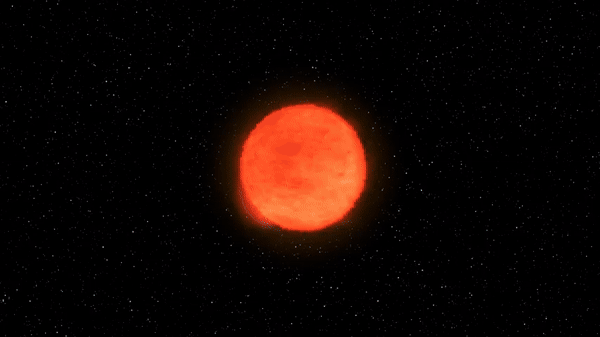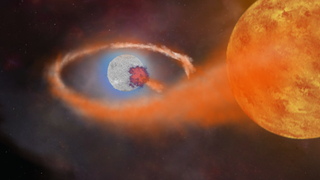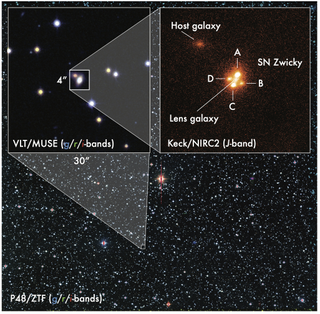The Zwicky Transient Facility has reached an unimaginable milestone: It has categorised over 10,000 cosmic explosions that mark the deaths of huge stars and the feeding frenzies of vampire stellar remnants. These occasions, generally known as supernovas, are undoubtedly a lot of of in all probability probably the most fearsome and very environment friendly occasions contained in the universe.
Since 2012, humanity has found nearly 16,000 supernovas. The Zwicky Transient Facility (ZTF), which started operations in 2017 utilizing the 48-inch telescope at Palomar Observatory, is answerable for nearly two-thirds of those detections. That makes it the biggest and arguably most worthwhile supernova surveyor thus far.
“There are trillions of stars contained in the universe, and about each second, one among them explodes,” California Institute of Expertise astronomer Christoffer Fremling talked about in a assertion. “Reaching 10,000 classifications is nice, nonetheless what we really ought to rejoice is the unimaginable progress we have now made in {our capability} to browse the universe for transients, or objects that change contained in the sky, and the science our wealthy data will allow.”
Fremling is the chief of the Vivid Transient Survey, an endeavor that makes use of the ZTF to go looking out and classify new supernovas.

It ought to most certainly come as no shock that the ZTF has been so revolutionary in supernova science on account of it has pedigree even in its set up. The issue generally known as for Caltech astronomer Fritz Zwicky.
All through the Thirties, Zwicky started trying cosmic explosions with a small telescope from the frigid heights of the Palomar Mountain close to San Diego. By the Forties, Zwicky moved his hunt for supernovas to the 48-inch Samuel Oschin telescope at Palomar Observatory, alongside alongside alongside along with his collaborator, Walter Baade.
Collectively, Zwicky and Baade found numerous these explosions, coining the time interval “supernova” to make clear them. Discovering over 120 supernovas all by his profession, Zwicky, who handed away in 1974, held the doc for trying these stellar explosions till 2009. Now, the supernova-hunting facility that shares Zwicky’s set up continues his record-setting work.
Why supernova classification factors
The ZTF does not merely hunt supernovas. This drawback is able to detecting various transient astronomical occasions, which could be occasions that happen after which fade from the sky.
Transient occasions tracked by the ZTF embody shortly transferring asteroids inside the image voltaic system, black holes ripping aside stars and devouring them in so-called tidal disruption occasions (TDEs), and colliding stars that lastly merge.
The ZTF detects tons of of 1000’s of those transient occasions every night time. As shortly as verified, these detections are despatched to an astronomy database generally known as the “Transient Title Server.” From there, they’re accessible to the astronomical neighborhood as an entire. This permits astronomers to regulate to up on the detection of supernovas utilizing various telescopes all through the globe.
ZTF principal investigator and Caltech astronomer Mansi Kasliwal says that the “set up of the sport” for ZTF discovering out supernovas is to build up spectra.
“Discovery is simply the first step,” she talked about. “Spectra are mainly in all probability probably the most helpful worldwide money on this matter. You haven’t any concept the physics and chemistry of the issue with out that.”
Shopping for the spectrum of sunshine from these supernovas permits scientists to go looking out out various traits. That choices their distances from Earth, the chemical compositions of the celebrities from which they erupted, and, crucially, what sort of supernova the ZTF has witnessed.

The supernovas that relate to the deaths of huge stars are sometimes known as core-collapse supernovas. They happen when big stars run out of gasoline for nuclear fusion, and the outward movement of power that helps them in opposition to the inward push of gravity ceases.
The core of the massive star collapses to create a neutron star or a black gap. This collapse sends shockwaves rippling into the outer layers of the star, inflicting a core-collapse supernova.

One completely different kind of supernova happens when the remnant of an already lifeless star, a white dwarf, vampirically strips provides away from a companion star. This provides builds up on the bottom of the white dwarf, triggering a thermonuclear explosion, which is seen as a Sort Ia supernova.
This course of normally obliterates the white dwarf, nonetheless there are uncommon occasions generally known as Sort-Iax supernovas all through which the stellar remnant lives on as a ravaged “zombie star.”
It’s vitally essential to find out Sort Ia supernovas on account of they appear to be an important astronomical instrument. On account of the sunshine output of Sort Ia explosions are so uniform, they’re normally typically known as “customary candles,” and to permit them to be utilized as milestones on an infinite cosmic measuring stick.

The ZTF does not merely hunt supernovas for varied services to find out, nonetheless. Utilizing two spectrographs at Palomar Observatory, the ZTF drawback might classify its non-public supernovas and supernovas detected by completely completely different services.
“As soon as extra as quickly as we began this drawback, we did not know what number of astronomers would modify to up on our detections,” Fremling talked about. “To see that so many have is a testomony to why we constructed ZTF: to survey your full sky for altering objects and share these data as shortly as potential with astronomers world in depth.”
One among many drawback’s largest achievements was the invention of Supernova Zwicky (SN Zwicky), a cosmic explosion warped by an impression generally known as “gravitational lensing,” which allowed it to seem 4 conditions throughout the equal picture.
“I used to be observing that night time and was absolutely shocked after I seen the lensed picture of SN Zwicky,” Fremling outlined in a Caltech data story closing yr. “We catch and classify 1000’s of transients with the Vivid Transient Survey, and that offers us a novel functionality to go looking very uncommon phenomena resembling SN Zwicky.”
Transferring ahead from this milestone, data from the ZTF will proceed to assist astronomers reply questions on stellar life and dying — and will even help in fixing the thriller of darkish power, the unknown pressure driving the acceleration of the enlargement of the universe.
Zwicky’s legacy of supernova science is in good fingers.
